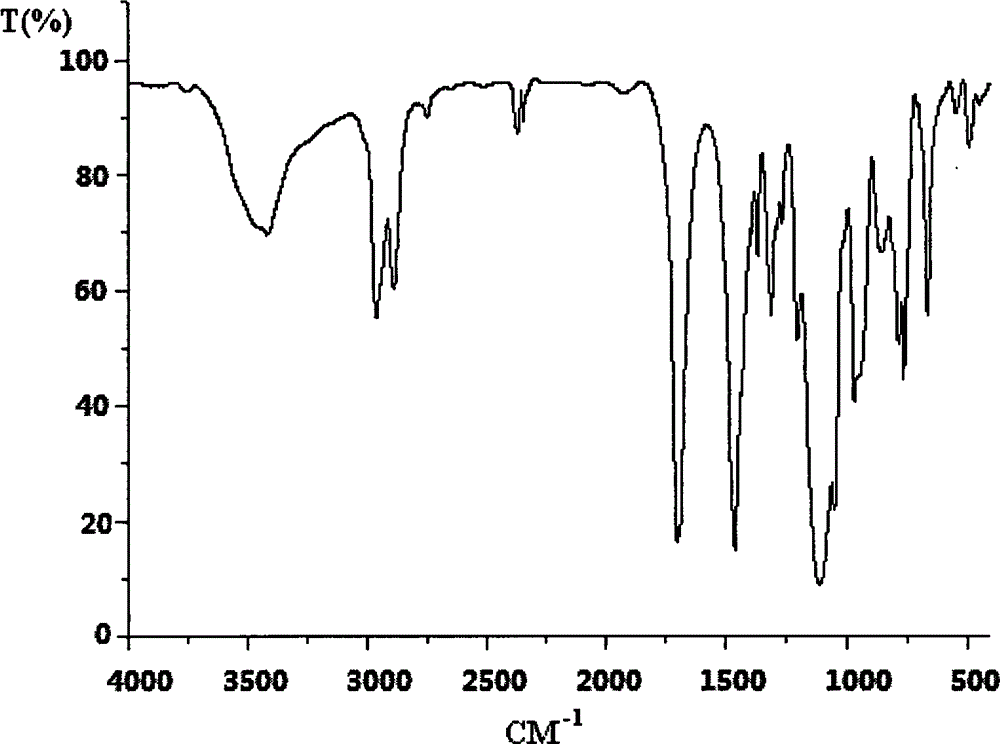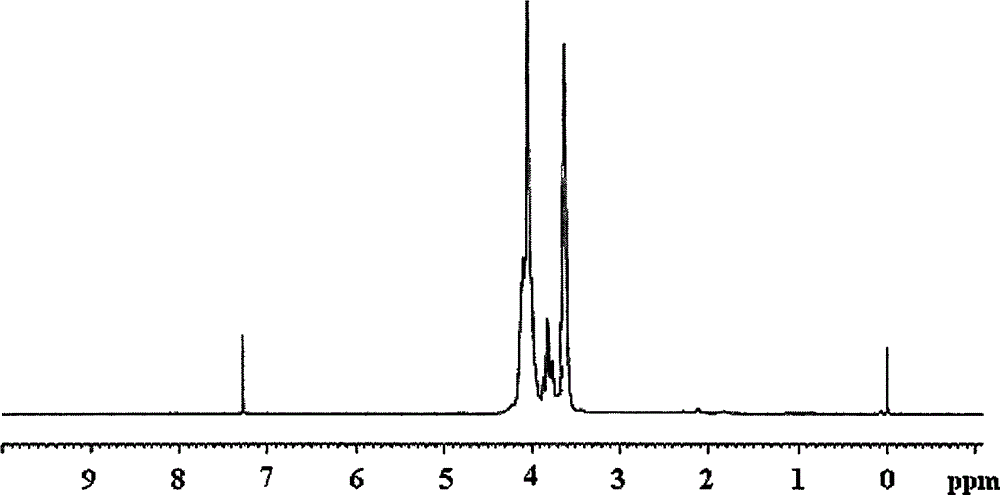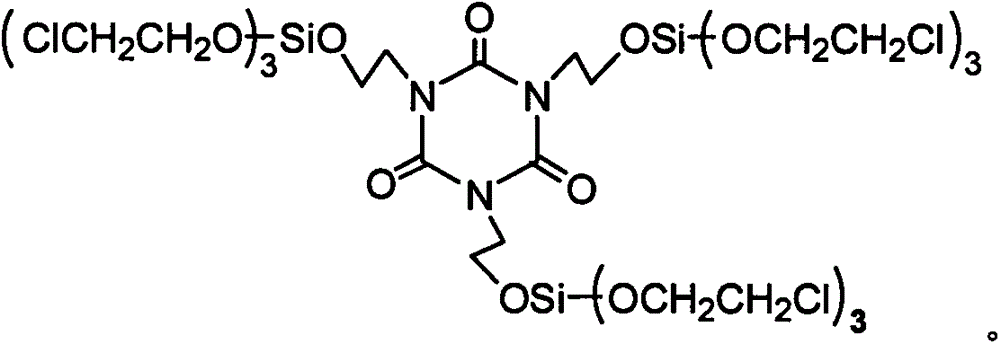Flame retardant tris(hydroxyethyl) isocyanurate trisilicate ethyl chloride compound and preparation method thereof
A technology of flame retardant and compound, which is applied in the field of flame retardant chloroethyl trisilicate trisilicate compound and its preparation, can solve problems such as threats to people's life and property safety, fire, etc., and achieve good application and development prospects and production costs Low, low volatility effect
- Summary
- Abstract
- Description
- Claims
- Application Information
AI Technical Summary
Problems solved by technology
Method used
Image
Examples
Embodiment 1
[0029] Example 1 In a 250ml four-neck flask equipped with a stirrer, a thermometer and a high-efficiency reflux condenser, and an extremely expandable sealing sleeve is installed on the upper mouth of the condenser, replace the air in the bottle with nitrogen, and add 20ml of dioxane ring and 8.5g (5.67ml, 0.05mol) of silicon tetrachloride, under stirring, cooled with an ice-water bath, the temperature of the reaction system was reduced to 0°C, and 4.4g (5.05ml, 0.1mol) of epoxy Ethane is introduced into the process to control the reaction temperature not higher than 20°C. After the addition, the temperature is raised to 30°C, and the heat preservation reaction is carried out for 1 hour; then, the upper port of the reflux condenser tube is replaced with a drying tube, and 4.358g (0.0167mol) of Saike The solution dissolved in 50ml of dioxane was dripped into the four-necked flask, and the reaction temperature was controlled by the dropping rate not higher than 65°C. After the dr...
Embodiment 2
[0030]Example 2 In a 250ml four-necked flask equipped with an agitator, a thermometer and a high-efficiency reflux condenser, and an extremely expandable sealing sleeve on the upper mouth of the condenser, replace the air in the bottle with nitrogen, and add 20ml of dichloroethylene Alkanes and 8.5g (5.67ml, 0.05mol) silicon tetrachloride, under stirring, cool with ice-water bath, make the reaction system temperature drop to 0 ℃, pass into 4.4g (5.05ml, 0.1mol) epoxy resin under the liquid surface Ethane is introduced into the process to control the reaction temperature not higher than 20°C. After the addition, the temperature is raised to 30°C, and the heat preservation reaction is carried out for 1 hour; then, the upper port of the reflux condenser tube is replaced with a drying tube, and 4.358g (0.0167mol) of Saike The solution dissolved in 50ml of dichloroethane was dripped into the four-necked flask, and the reaction temperature was controlled by the dropping rate not to b...
Embodiment 3
[0031] Example 3 In a 250ml four-necked flask equipped with a stirrer, a thermometer and a high-efficiency reflux condenser, and an extremely expandable seal sleeve is installed at the upper mouth of the condenser, replace the air in the bottle with nitrogen, add 20ml of acetonitrile and 8.5 g (5.67ml, 0.05mol) of silicon tetrachloride, under stirring, cooled with an ice-water bath, the temperature of the reaction system was reduced to 0°C, and 4.4g (5.05ml, 0.1mol) of ethylene oxide was fed under the liquid surface, Control the reaction temperature not higher than 20°C during the feeding process. After the addition, raise the temperature to 30°C and keep it warm for 1 hour; then replace the upper port of the reflux condenser tube with a drying tube, and dissolve 4.358g (0.0167mol) Cycla in 50ml The acetonitrile solution was dropped into the four-necked flask, and the reaction temperature was controlled by the dropping speed to not be higher than 65°C. After the drop, the tempe...
PUM
| Property | Measurement | Unit |
|---|---|---|
| flash point | aaaaa | aaaaa |
| density | aaaaa | aaaaa |
| refractive index | aaaaa | aaaaa |
Abstract
Description
Claims
Application Information
 Login to View More
Login to View More - R&D
- Intellectual Property
- Life Sciences
- Materials
- Tech Scout
- Unparalleled Data Quality
- Higher Quality Content
- 60% Fewer Hallucinations
Browse by: Latest US Patents, China's latest patents, Technical Efficacy Thesaurus, Application Domain, Technology Topic, Popular Technical Reports.
© 2025 PatSnap. All rights reserved.Legal|Privacy policy|Modern Slavery Act Transparency Statement|Sitemap|About US| Contact US: help@patsnap.com



